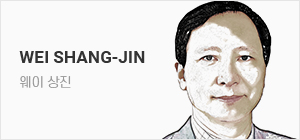

A large number of countries achieved political independence after the World War II. Most of them started out as democracies. Democracy however, has survived both in the form and in content, only in very few countries. In this regard, India and South Korea stand out as honourable exceptions.
Indian Democracy
At the time of India’s independence (in 1947), Winston Churchill had famously said that India is only a mass of people, not a nation. It was argued that with the division of castes, creeds, religions and languages, India cannot possibly survive as a democratic nation.
Churchill has been proven completely wrong. India not only has survived as a nation but has a functioning democracy in the world’s most populous country with more than 1.4 billion people.
This year, from April 19 to June 01, the five-yearly general elections were held in India. With nearly one billion voters, this was the largest ever election in the world. The verdict came out (June 4, 2024) and, Narendra Modi was sworn in (June 9, 2024), as the Prime Minister of India, consecutively for the third term. This exceptional feat was achieved earlier only once ― by the country’s first Prime Minister, Jawaharlal Nehru. This significant development is going to have major implications for the future of the Indian economy.
For quite some time, the image of India imprinted on the minds of people around the world is that of a deprived nation ― with too many diversities and accompanying contradictions. Not anymore. While this change of perception is attributed, in no small measure to Prime Minister Narendra Modi, the process actually started way back in 1991.
India and China on the World Stage
When the Bretton Woods institutions- i.e. International Monetary Fund (IMF) and World Bank were created in the aftermath of the Second World War, during the 1950s, there was a tacit understanding that there would be three engines of growth for the world economy ― the US, Western Europe, and then emerging Japan. If one of the three falters, the remaining ones would take on the mantle of maintaining the momentum of the global economy. This went on, almost unabatedly, for nearly 50 years notwithstanding the two oil crises (1973 and 1980) and Asian Financial Crisis (1997). However, at the beginning of the 2000s, all three engines started slowing down simultaneously ― a phenomenon known as a ‘synchronised global slowdown’.
At that stage, two countries suddenly catapulted to the global stage - first China and then India. China had initiated comprehensive economic reforms in 1978 on their own, while India did the same in 1991, in response to an unprecedented macroeconomic crisis.
| ||
| The Indian economy is laying the groundwork for a historic reemergence. When India gained independence in 1947, former British Prime Minister Winston Churchill(right) said that India is only a mass of people, not a nation. India is growing so remarkably as a country that this statement is meaningless. Prime Minister Narendra Modi, who became the second person in Indian history to be elected to three consecutive terms through the recent general election, is expected to rein in this trend. Prime Minister Modi(left) is greeting supporters at an event held in Mumbai on the 14th of last month. The Taj Mahal, India''s representative building and UNESCO World Heritage Site, is shrouded in fog with the sun in the background, creating a mysterious atmosphere. [Source: The International Churchill Society·EPA·Taj Mahal official website] |
India’s Growth Story
As a matter of fact, during the first four decades of planning ― between 1951 to 1991, the Indian economy trudged along, posting an average real GDP growth of only 3.5 percent ― which came to be known as the ‘Hindu rate of growth’. With population growing at 2.2 per cent per year, the per capita income was growing at a measly rate of 1.3 per cent per annum, reinforcing the perception of India as a deprived nation.
With the pathbreaking economic reforms initiated in 1991, the real GDP growth in India accelerated rapidly reaching nearly double-digit growth rate in 2009.The Indian economy successfully weathered the storms such as the Asian Financial crisis (1997) and the global financial meltdown (2008-09).
With the change of government in 2014, economic reforms not only continued but were given a sizeable boost by Prime Minister Narendra Modi. It is remarkable that while most large economies have been bogged down by Covid Pandemic (2020) and geopolitical headwinds ― i.e., at least two wars involving Russia and Israel, uncertainties in global supply chains, inflationary pressures and so on, India’s economic growth has remained largely unfettered and indeed, has maintained its strong upward growth path.
Figure 1 presents real GDP growth rates of selected Asian countries. With the Chinese economy facing major structural challenges (in addition to geopolitical uncertainties), the Indian economy has seemingly emerged as a lone star replacing China as the fastest growing economy among all large economies in the world.
In terms of nominal GDP, in 2024 (India’s FY2023-24), India’s nominal GDP has been projected to be at US$ 3.94 trillion, at which level India ranks 5th among the world’s largest economies (As a reference point, Republic of Korea in 2024 is at 14th position with US$ 1.76 trillion economy).
According to IMF projections, India would take away the 4th rank from Japan in 2025 (Indian FY 2024-25) and the 3rd rank from Germany in 2027 (Indian FY 2026 -27) and thus become the third largest economy in the world. As the third largest economy (in terms of nominal GDP), India’s nominal GDP in 2027 is projected to be around US$ 5.29 trillion (or 4.18 percent of the world economy).
Evidently, the Indian economy has come a long way. At its lowest ebb, in 1991, share of India in global economy (in nominal GDP terms) had crashed to the level as low as 1.14 percent. With the launch of comprehensive macroeconomic reforms, India’s share improved sharply. During the Manmohan Singh years - 2004 to 2014, the share rose from 1.60 per cent to 2.56 percent. In Modi 1.0 and Modi 2.0 years (2014 -2024), the government fostered and widened the reforms, leading to a further improvement in India’s share in world GDP from 2.56 to 3.59 per cent during the 10-year period.
During the latest general elections, PM Narendra Modi had emphasised his government’s achievement in bringing India up from the 10th position in 2014 (when Modi 1.0 began) to the 5th position in 2024. And a promise has been made to raise India’s ranking to 3rd position during Modi 3.0. As shown above, that outcome is highly likely within next 2 to 3 years.
Comparisons based on GDP (PPP)
It is well recognized that inter-country comparisons are beset with aberrations associated with exchange rates and relative prices. The way out is comparisons of GDP based on Purchasing Power Parity (PPP).
Thanks to Angus Maddison’s seminal work, estimates of GDP based on PPP are readily available for India and China (Year 1 AD,1000 AD,1500 AD, 1600 AD etc) and for the US and Western Europe (Years 1913,1950 etc). These millennial data unravel some eye-opening approximations.
| ||
| Labourers work at a construction site of the Ahmedabad-Mumbai High Speed Rail corridor in Ahmedabad, India, May 31, 2023. [REUTERS] |
Evolution of the Indian Economy through Millennia
Those who consider India as a deprived nation may find it shocking that during the first 1500 years of recorded history, ancient India was the single largest economy in the world. India‘s share in global GDP based on PPP ranged between one-third (Year 1 AD) and one-fourth (Year 1500 AD). During the period, year 1 AD to 1820 AD, India and China together contributed half of the global GDP. Up to the year 1500 AD, India ranked first and China the second. In that year, i.e., 1500 AD, their shares in global GDP roughly equalled at around 25 per cent. By 1820, China at the number one position commanded nearly twice the global share of India, which was at number two (33 per cent and 16 per cent respectively). After the year 1820 AD shares of India and China both came down sharply.
Just on the eve of the World War I (i.e., 1913), the global shares of India and China were roughly equal, but at a much lower level (between 8 and 9 per cent), whereas the US had emerged on the global stage with 19 per cent world share while the Western Europe had a whopping 33 per cent plus share.
After the end of Second World War, in 1950, India and China‘s shares were again comparable but at even lower level ― China 4.5 per cent and India 4.2 per cent, while the US share had shot up to the its highest level of 27 per cent.
By 1980, the global shares of India and China were at their rock bottom ― China 2.3 per cent and India, slightly better at 3.0 per cent, while the US still commanded a highly significant share of 21 per cent.
With metamorphic economic reforms initiated by China in 1978 and by India in 1991, global shares in PPP based GDP for both China and India reversed their declining trend and started rising, while the US share kept falling.
It may be noted that in terms of GDP based on PPP, India consistently ranked the third from way back in 2009 ― i.e., well before the beginning of Modi 1.0 (in 2014). Unfortunately, the credit is generally not given to the previous government.
In terms of GDP ― PPP, the global ranking in 2024 is in the following order: China, the US, India, Japan, and Germany in top five positions (As a reference point, Republic of Korea is placed at 14th position with 1.65 percent global share).
Figure 2 depicts the movements in global shares of India, China, the US and South Korea from 1980 to 2024 based on IMF data. As is evident from Figure 2, China overtook the US in 2017 at around 16 per cent share. As of 2024, while the US share at 15.5 per cent continues falling and Chinese share is seemingly levelling off around 19 per cent, importantly, India‘s share at 7.86 per cent has been steadily rising.
On the eve of Modi 3.0, this analysis raises several questions:
①Is the latest resurgence of economic growth in India sustainable over the medium term?
②What economic reforms would the Modi 3.0 government have to undertake to maintain India‘s impressive economic growth performance and make it even stronger?
③Where would these trends take the Indian economy in the long run? The gap in global shares of the US and India have been narrowing quite rapidly. With a stretch of imagination, is it not possible for the Indian economy to be actually bigger in size than the US economy, thus restoring the millennial order?
④When, if at all, could this happen? Can this happen before 2047, when the Independent India celebrates its birth centenary?
I propose to address these and other related issues in my forthcoming monthly articles.
Economist, Educationist, Academic, Administrator, Author, Public Speaker
- Independent Director on the Boards of five Corporates, including two from
the Tata Group.
- Chairman of Government of Maharashtra Committee on ‘Financial
Empowerment of Public Higher Educational System in Maharashtra‘.
- Chairman of ‘Vision and Strategy Committee’ for Gokhale Institute of Political
Economy, Pune.
-MP, Rajya Sabha (2016-2022), Nominated by the President of India on the
recommendation of the Prime Minister Shri Narendra Modi.
- Chairman, RBI History Committee, (2018-20), Vol.V ? covering the period,
1997-2007.
- Professor, Durgabai Deshmukh Chair (2014-16) Council for Social
Development, New Delhi.
-Member, National Advisory Council (2010-2014)
-PhD in Economics from Indiana University, USA (1986).
-B.Sc and MA from Mumbai University (1973 and 1975)


인도 경제의 역사적인 재부상
제2차 세계대전 이후 많은 국가가 정치적 독립을 이뤘다. 이 중 대부분의 국가가 민주주의로 시작했지만, 형태와 내용 모두에서 민주주의가 살아남은 국가는 거의 없다. 이런 면에서 인도와 한국은 눈에 띄는 명예로운 예외다.
인도의 민주주의
1947년 인도 독립 당시, 윈스턴 처칠은 인도는 국가가 아니라 사람들의 집단일 뿐이라는 유명한 말을 남겼다. 카스트, 신념, 종교, 언어의 분열로 인해 인도는 민주주의 국가로 살아남을 수 없을 거란 것이었다.
처칠의 말은 완전히 틀렸음이 입증됐다. 인도는 국가로서 살아남았을 뿐 아니라 인구가 14억 명이 넘는 세계에서 인구가 가장 많은 국가에서 제대로 작동하는 민주주의를 유지하고 있다. 올해 4월 19일부터 6월 1일까지 인도에서 5년 주기로 돌아오는 총선이 치러졌다. 유권자의 수가 거의 10억명인 세계 최대 규모의 선거였다. 2024년 6월 4일 결과가 나왔고, 2024년 6월 9일 나렌드라 모디(Narendra Modi)가 3번 연속 인도 총리로 취임했다. 3연임이라는 놀라운 업적은 과거 단 한 번 있었던 인도 초대 총리 자와할랄 네루(Jawaharlal Nehru) 이후로 처음이고, 이 중요한 사건은 인도 경제의 미래에 큰 영향을 미칠 것이다. 인도는 꽤 오랫동안 전 세계 사람들의 마음 속에 너무 많은 다양성으로 인해 모순이 존재하는 빈곤한 국가의 이미지로 각인돼 있었다. 그러나 더 이상은 아니다. 이러한 인식의 변화가 있기까지 나렌드라 모디 총리가 적지 않은 역할을 하긴 했지만, 사실 그 과정은 1991년에 시작됐다.
세계 무대에 선 인도와 중국
제2차 세계대전 이후 1950년대에 국제통화기금(IMF)과 세계은행 등 브레튼우즈 체제가 구축됐을 때, 세계 경제에는 3개의 성장 엔진이 있다는 암묵적인 이해가 존재했다. 이 3개의 엔진은 미국, 서유럽, 그리고 신흥 일본이었다. 이 중 하나가 흔들리면, 나머지 둘이 세계 경제의 모멘텀을 유지하는 역할을 맡았다. 이 체제는 두 번의 석유 위기(1973년, 1980년)와 아시아 금융 위기(1997년)에도 불구하고 거의 50년 동안 약해지지 않고 유지됐다. 그러나 2000년대 초 이 3개의 엔진이 동시에 느려지기 시작했고, 이 현상은 ‘동기화된 글로벌 경기 둔화(synchronised global slowdown)라고 불린다. 이 때 두 개의 국가가 갑자기 글로벌 무대로 뛰어오른다. 중국이 먼저였고 그 다음은 인도였다. 중국은 1978년 자체적으로 포괄적인 경제 개혁을 시작했고, 인도 역시 전례 없는 거시경제적 위기에 대한 대응으로 1991년 경제개혁을 시작했다.

인도의 성장 스토리
사실 인도 경제개발계획의 초기 40년(1951-1991년) 동안에는 경제가 느리게 성장했고, 평균 실질 국내총생산(GDP) 성장률은 3.5%에 불과해 소위 ‘힌두 성장률’이라고 불렸다. 인구가 연간 2.2%씩 증가하는 가운데 1인당 소득 증가율은 연간 1.3%에 불과했기 때문에 인도는 빈곤한 국가라는 인식이 강화됐다.
그러나 1991년 시작된 혁신적인 경제 개혁으로 인도의 실질 GDP 성장은 급속히 가속화해 2009년엔 두 자릿수에 가까운 성장률을 기록했다. 인도 경제는 아시아 금융 위기(1997년)와 글로벌 금융 위기(2008-2009년) 등의 위기도 성공적으로 헤쳐 나갔다.
2014년 정부가 바뀌면서 경제 개혁은 지속됐을 뿐 아니라 나렌드라 모드 총리에 의해 상당한 추진력을 얻게 된다. 대부분의 경제대국이 2020년 코로나19 팬데믹과 여러 지정학적인 역풍으로 인해 (러시아 및 이스라엘 전쟁, 글로벌 공급망 불확실성, 인플레이션 압력 등) 수렁에 빠졌을 때도 인도는 경제 성장을 거의 그대로 유지하며 사실 상 강력한 상승 성장 궤도를 유지해왔다는 것은 주목할 만한 일이다.
그림 1은 일부 아시아 국가의 실질 GDP 성장률을 보여준다. 중국 경제가 지정학적 불확실성에 더해 주요한 구조적 문제에 직면해 있는 반면, 인도 경제는 홀로 빛나는 별로 부상하며, 중국을 제치고 세계 경제대국 중 경제가 가장 빠르게 성장하는 국가가 될 것으로 보인다. 명목 GDP의 경우 인도의 2024년(2023-24 회계연도) 명목 GDP는 미화 3조9400억달러로 예상되며, 이는 인도를 세계 경제 순위 5위에 올려놓았다. (참고로 한국은 2024년 1조 7600억 달러로 14위다.)
IMF의 전망에 따르면 인도는 2025년(2024-25 회계연도)에 일본으로부터 4위 자리를 탈환하고, 2027년에는 독일로부터 3위를 탈환해 세계 3위의 경제대국이 될 것으로 예상된다. 명목 GDP 기준 세계 3위 경제국이 된 2027년 인도의 명목 GDP는 약 5조2900억달러(세계 경제의 4.18%에 해당)에 이를 것으로 예상된다. 분명히 인도 경제는 많은 발전을 이뤘다. 가장 낮은 썰물 때였던 1991년엔 세계 경제에서 인도가 차지하는 비중(명목 GDP 기준)은 1.14% 수준까지 떨어졌었다. 그러나 포괄적인 거시경제 개혁이 시작되면서 인도의 점유율은 빠르게 증가하기 시작한다. 만모한 싱(Manmohan Singh)이 총리였던 2004년부터 2014년까지 인도의 세계 경제 점유율은 1.60%에서 2.56%로 증가했다. 모디 1.0 및 모디 2.0 기간(2014-2024년)에는 정부가 개혁을 더욱 발전 및 확대함에 따라 세계 GDP 중 인도의 점유율은 해당 10년 동안 2.56%에서 3.59%로 또 다시 증가했다.
최근 총선에서 나렌드라 모디는 본인의 정부가 인도를 2014년(모디 1.0 출범 당시) 10위에서 2024년 5위까지 끌어올렸음을 강조했다. 또한 모디 3.0 정부 동안 인도의 순위를 3위까지 더 끌어올리겠다고 약속했다. 위에서 언급했듯이, 향후 2~3년 안에 이 약속이 실현될 가능성은 상당히 높다.
구매력평가 기준 GDP 비교
국가 간 비교에는 환율 및 상대가격으로 인한 왜곡의 소지가 있다는 건 잘 알려진 사실이다. 이에 대한 해결책은 구매력평가(PPP) 를 기준으로 한 GDP를 비교하는 것이다.
앵거스 매디슨(Angus Maddison)의 독창적인 연구 덕분에 PPP 기준 GDP 추정치를 인도와 중국(서기 1년, 서기 1000년, 서기 1500년, 서기 1600년 등) 및 미국과 서유럽(1913년, 1950년 등)에 대해 쉽게 구할 수 있다. 이 수천년 간의 데이터는 놀라운 수준의 근사치를 제공해준다.

수천년에 걸친 인도 경제의 진화
인도를 빈곤한 국가라고 생각하는 사람에겐 역사 시대의 첫 1500년 동안 고대 인도가 세계에서 가장 큰 단일 경제국이었단 사실이 놀라울 수 있다. PPP기준 세계 GDP에서 인도가 차지하는 비중은 3분의 1(서기 1년)에서 4분의 1(서기 15000년) 사이였다. 서기 1년부터 1820년까지의 기간 동안 인도와 중국은 둘이 합쳐 세계 GDP의 절반을 차지했다. 서기 1500년까진 인도가 1위, 중국이 2위였고 서기 1500년에는 세계 GDP에서 인도와 중국이 차지하는 비중이 각각 약 25% 정도로 서로 비슷했다. 1820년에는 중국이 1위였고, 당시 중국의 점유율은 2위였던 인도보다 거의 두배 높았다(중국 33%, 인도 16%). 그러나 서기 1820년 이후 인도와 중국의 점유율은 급격히 떨어지기 시작한다.
제1차 세계대전 발발 직전이었던 1913년, 인도와 중국의 세계 점유율은 서로 비슷했지만, 훨씬 낮은 수준이었다(8~9%). 한편, 세계 무대에 등장한 미국의 점유율은 19%였고 서유럽의 점유율은 무려 33% 이상이었다.
제2차 세계대전이 끝난 후 1950년에 인도와 중국의 점유율은 여전히 비슷했지만, 중국 4.5%, 인도 4.2%로 과거보다 더 낮은 수준이었다. 반면, 미국의 점유율은 미국의 역대 최고 수준인 27%까지 치솟았다. 1980년엔 중국 2.3%, 인도는 그보다 조금 나은 3.0%로 인도와 중국의 세계 점유율은 바닥을 찍었고 미국은 21%로 여전히 상당히 높은 비중을 차지하고 있었다. 그러나 중국은 1978년, 인도는 1991년에 시작한 변혁적인 경제 개혁 덕분에 중국과 인도의 PPP 기준 세계 GDP점유율은 하락 추세를 벗어나 상승하기 시작했다. 반면, 미국의 비중은 지속적으로 하락했다. PPP 기준 GDP의 경우, 2014년 모디 1.0정부가 출범하기 훨씬 이전인 2009년부터 인도가 계속해서 3위였다는 점을 기억할 필요가 있다. 그러나 안타깝게도 이에 대한 공로가 이전 정부에 돌아가고 있지는 않다.
2024년 PPP 기준 GDP 세계 순위 중 최상위 5개국은 중국, 미국, 인도, 일본, 독일 순이다. (참고로 한국은 점유율 1.65%로 14위다.)
그림 2는 IMF 데이터를 기반으로 1980년부터 2024년까지 인도, 중국, 미국, 한국의 세계 경제 점유율이 어떻게 변화했는가를 보여준다. 그림 2에서 알 수 있듯이 중국은 2017년 16% 선에서 미국을 앞질렀다. 2024년 현재 미국의 점유율은 15.5%로 계속 하락 중이고 중국의 점유율은 약 19% 수준에서 더 이상 올라가지 않는 것으로 보인다. 하지만 중요한 것은 현재 7.86%인 인도의 점유율이 꾸준히 상승하고 있다는 것이다.
모디 3.0 정부 출범을 계기로 이러한 분석은 몇 가지 질문을 제기한다.
①최근 보이는 인도 경제 재부상은 중기적으로 지속가능한가?
②인도의 인상적인 경제 성장을 유지하고 또 더 강화하기 위해 모디 3.0 정부는 어떤 경제 개혁을 수행해야 할 것인가?
③이러한 추세를 고려했을 때 인도 경제의 장기적인 미래는 무엇일까? 미국과 인도 사이의 세계 경제 점유율 격차는 상당히 빠르게 좁혀지고 있다. 상상의 나래를 펼쳐보자면, 인도 경제의 규모가 미국보다 커지고, 그리하여 지난 천년의 질서를 회복하는 것은 불가능한 일일까?
④만약 가능하다면, 언제쯤 가능할 것인가? 인도 독립 100주년인 2047년이 되기 전에 실현될 수 있을 것인가?
필자는 앞으로의 월간 기고를 통해 이 질문들과 이와 관련된 문제들을 다루고자 한다.
나렌드라 자다브 프로필
- 인도 중앙행정부 기획위원회 자문위원 겸 인도 정부 원로부행정고문회의 자문위원회 특임고문
-라지야 사바주 하원의원(MP, Rajya Sabha) (2016-2022)
-인도 국가자문위원회 위원(2010-2014)
-인도 국가계획위원회 위원(2009-2014)
-인도 푸네대학교 총장(2007)
-아프가니스탄 정부 고문(2006)
-인도중앙은행 수석 경제보좌관(2003-2006)
-국제통화기금 자문관(1998-2002)
-인디애나대학교 대학원 경제학 박사(1986)
-뭄바이대학교 대학원 경제학 석사(1973-1975)
.
hongi@heraldcorp.com















